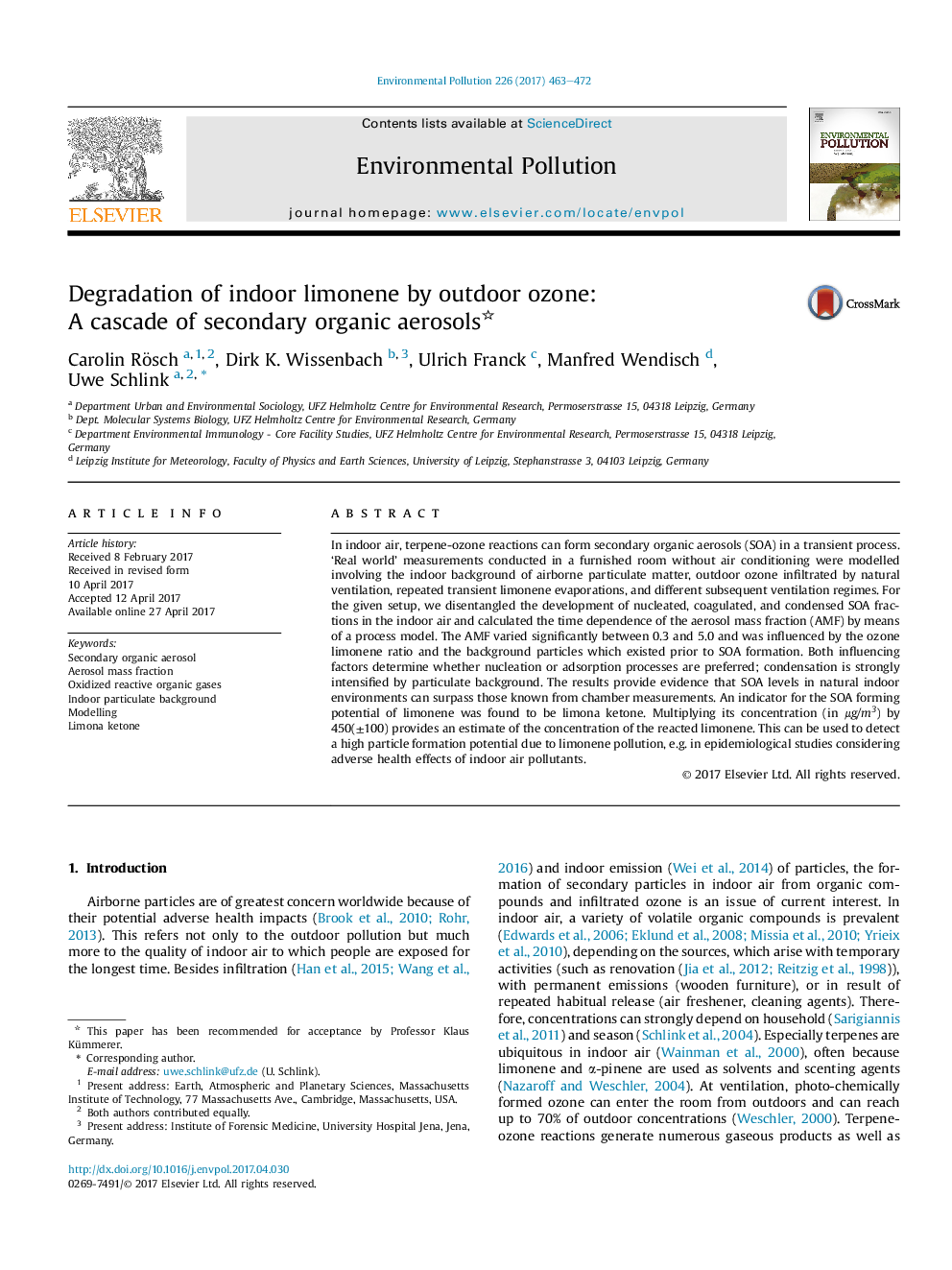| Article ID | Journal | Published Year | Pages | File Type |
|---|---|---|---|---|
| 5749109 | Environmental Pollution | 2017 | 10 Pages |
â¢Secondary organic aerosols from limonene emitted indoors and ozone ventilated from outdoors are an indoor air pollutant.â¢Formation of secondary organic aerosols proceeds in a cascade of nucleation, coagulation, and condensation.â¢The condensation is strongly intensified by particulate matter existing in the indoor air prior to SOA formation.â¢Limona ketone is an indicator for the potential of SOA formation due to airborne limonene in indoor environments.â¢As background particles can act as a reactant, we suggest rethinking the yield-concept of SOA formation.
In indoor air, terpene-ozone reactions can form secondary organic aerosols (SOA) in a transient process. 'Real world' measurements conducted in a furnished room without air conditioning were modelled involving the indoor background of airborne particulate matter, outdoor ozone infiltrated by natural ventilation, repeated transient limonene evaporations, and different subsequent ventilation regimes. For the given setup, we disentangled the development of nucleated, coagulated, and condensed SOA fractions in the indoor air and calculated the time dependence of the aerosol mass fraction (AMF) by means of a process model. The AMF varied significantly between 0.3 and 5.0 and was influenced by the ozone limonene ratio and the background particles which existed prior to SOA formation. Both influencing factors determine whether nucleation or adsorption processes are preferred; condensation is strongly intensified by particulate background. The results provide evidence that SOA levels in natural indoor environments can surpass those known from chamber measurements. An indicator for the SOA forming potential of limonene was found to be limona ketone. Multiplying its concentration (in μg/m3) by 450(±100) provides an estimate of the concentration of the reacted limonene. This can be used to detect a high particle formation potential due to limonene pollution, e.g. in epidemiological studies considering adverse health effects of indoor air pollutants.
Graphical abstractDownload high-res image (134KB)Download full-size image
